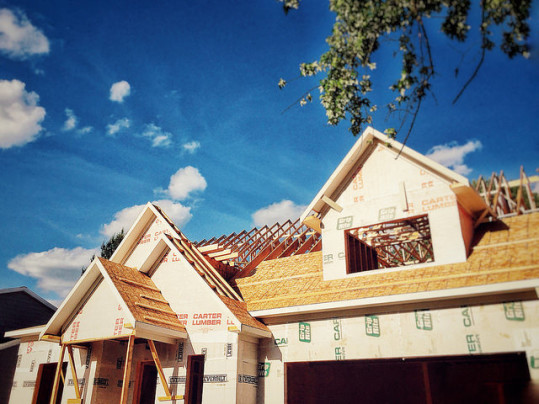A newly released study from researchers at the University of Southern California looks at homeownership rates among young adults between the ages of 25 and 44. The study’s results show, among that age group, there’s been a 10 percent drop in the homeownership rate over the past 10 years. But does that necessarily mean young Americans are no longer interested in owning their own home? Well, no. The researchers point to a number of factors that have contributed to the decline in homeownership among people of typical prime home-buying age. Among them, the foreclosure crisis looms large. Because the past 10 years includes the years following the housing crash and economic crisis, some of that decline is better explained by the day’s economic conditions rather than a lack of desire to buy a house. And, in the years since, the recovery’s slow pace and weakened job market have made buying a home a struggle for many young Americans. However, more recently, home buyer demand has rebounded – as have home prices and the labor market. And, according to this particular study, so will the homeownership rate among young Americans, particularly if there’s a continued rise in education and income levels. More here.
Archive for June 2017
Housing Market Outlook Tells Familiar Story
Following the ups-and-downs of the housing market can be difficult for the average home buyer or seller. Because of this, many Americans get in the market without a basic understanding of the forces currently driving home prices, mortgage rates, demand, etc. However, it can be beneficial to have a big-picture understanding of where things are and where they’re headed before you make a move. These days, if you want a better grasp of what’s happening in real estate, you have to start with inventory. So far this year, a lower than normal number of homes for sale has been the primary factor influencing home prices and overall sales. Take the most recent outlook from Fannie Mae’s Economic & Strategic Research Group, for example. According to their forecast, inventory remains the big story, as it has been for the past year. “The narrative for the housing market hasn’t changed over the past year,” Doug Duncan, Fannie Mae’s chief economist, says. “A labor shortage continues to restrain homebuilding, and tight inventory is constraining sales and boosting home prices.” Despite those challenges, Duncan says the group expects mortgage rates will stay low enough to support buyers and home sales should rise 3.2 percent this year. More here.
Lawn Tips That Might Help Sell Your Home
When considering home improvement projects that can add value to your home or even help it sell faster, don’t forget to pay some attention to your lawn and landscaping. Good landscape design can help you get a better price when it’s time to move but will also help beautify your neighborhood and please your neighbors in the meantime. If you aren’t that handy in the garden, start with your lawn. A recent article from Freddie Mac lays out a number of tips to help you get started. Among them, it’s good to first identify what type of grass you have. This will help you know what seed to buy if you need to fill any dead spots. You should also be careful not to cut your lawn too short or give it too much water. Grass needs a little length to help it absorb sunlight and maintain healthy roots. Too much watering can also damage roots and will cause more weeds to grow. Another tip is to be careful with fertilizers and pesticides. Break fertilizer applications up throughout the season rather than doing it all at once. And be careful with pesticides, as they may be more trouble than they’re worth. According to the article, lawn issues are more likely going to be the result of water, weather and lawn mower damage than pests. Following these simple rules should help you achieve a greener and more luscious lawn. More here.
Builders Say New Home Market Is Solid
The National Association of Home Builders has been tracking builders’ view of the new home market for 30 years. Their Housing Market Index measures how builders feel about current and future conditions as a way of predicting the health of the overall market going forward. Obviously, when builders feel confident that buyers are interested, more new homes get built. And, as more new homes get built, the added inventory has a ripple effect throughout the entire housing market. That’s because, more new homes mean more choices for buyers and fewer price increases. In June, the NAHB’s index scored a 67 on a scale where any number above 50 indicates more builders view conditions as good than poor. Granger MacDonald, NAHB’s chairman, says builders have been fairly consistent so far this year. “Builder confidence levels have remained consistently sound this year, reflecting the ongoing gradual recovery of the housing market,” Granger said. But though builders have consistently voiced optimism about the level of buyer demand this year, they’ve also expressed concern that a lack of available lots has held back the number of new homes being built in many markets. More here.
Mortgage Demand Up 8% Over Last Year
According to the Mortgage Bankers Association’s Weekly Applications Survey, demand for loans to buy homes is now eight percent higher than it was at the same time last year. But, though that’s good news and indicates a strong level of interest from prospective home buyers, it doesn’t tell the whole story. That’s because, at the same time that demand is up from a year ago, it is lower than it should be considering the number of interested buyers and the fact that mortgage rates remain relatively low. Last week, for example, average mortgage rates fell again and are now at seven-month lows. Joel Kan, an MBA economist, told CNBC that low mortgage rates didn’t inspire an increase in purchase demand last week but it did rally refinance activity. “From a borrower’s perspective, rates held steady at seven-month lows last week providing some borrowers an opportunity to refinance,” Kan said. “Over the last two weeks refinance applications have increased 13 percent and the average loan size increased to its largest since September 2016, reflecting the tendency for jumbo borrowers to be more sensitive to rates than those with smaller loan balances.” The MBA’s weekly survey has been conducted since 1990 and covers 75 percent of all retail residential loan applications. More here.
The Top Things That Cause Home Buyers Stress
Home buyers have a lot to consider. Buying a home is no small transaction and the potential for stress is high. So what is the top thing stressing out home buyers these days? Well, it probably comes as no surprise that it involves money. According to a recent survey, the number one fear prospective buyers have is that they’ll lose their earnest money deposit – which is money buyers put down on the house once their offer is accepted. If the deal goes through, that money is used as part of the buyer’s down payment. But, if the buyer backs out of the deal, they risk losing that deposit. Naturally, this could cause concern among prospective buyers. After all, losing a percentage of their down-payment money could alter their buying power and price range. Some other worries buyers expressed included becoming house poor or financially burdened by the costs of homeownership and their new mortgage payment. Fortunately, this is a risk that can be easily avoided by having a firm budget beforehand and sticking to it. Knowing what you can and can’t afford is crucial, especially in a competitive market. Rounding out the top three, buyers expressed concern about getting into a bidding war that drives up the price of their desired home. More here.
Tracking The Habits Of First-Time Home Buyers
First-time home buyers have always been an important demographic when tracking the housing market’s health. Whether or not younger Americans were buying homes, where they were buying, and in what numbers has been used to gauge trends and patterns that affect, not only first-time buyers, but everyone active in the real-estate market. Because of that, a new report from Genworth Financial analyzing first-time home buyer records back to 1994 is an important look at the who, what, where, and how of Americans buying their first home. Some of the highlights include the fact that first-time buyers bought more single-family homes during the first quarter of 2017 than during any other first quarter since 2005 and drove 85 percent of the housing market’s expansion from 2014 through 2016. In other words, the report found that there is currently a high level of demand among younger Americans. But it also found that many potential buyers have been unable to buy or have stayed out of the market due to misconceptions about what was required. Tian Liu, Genworth’s chief economist, says one of the main issues is the mistaken belief that a 20 percent down payment is required to buy. “By studying this group more closely, we hope to bring a better understanding about the many low down payment options available to help first-time home buyers reach homeownership sooner.” More here.







